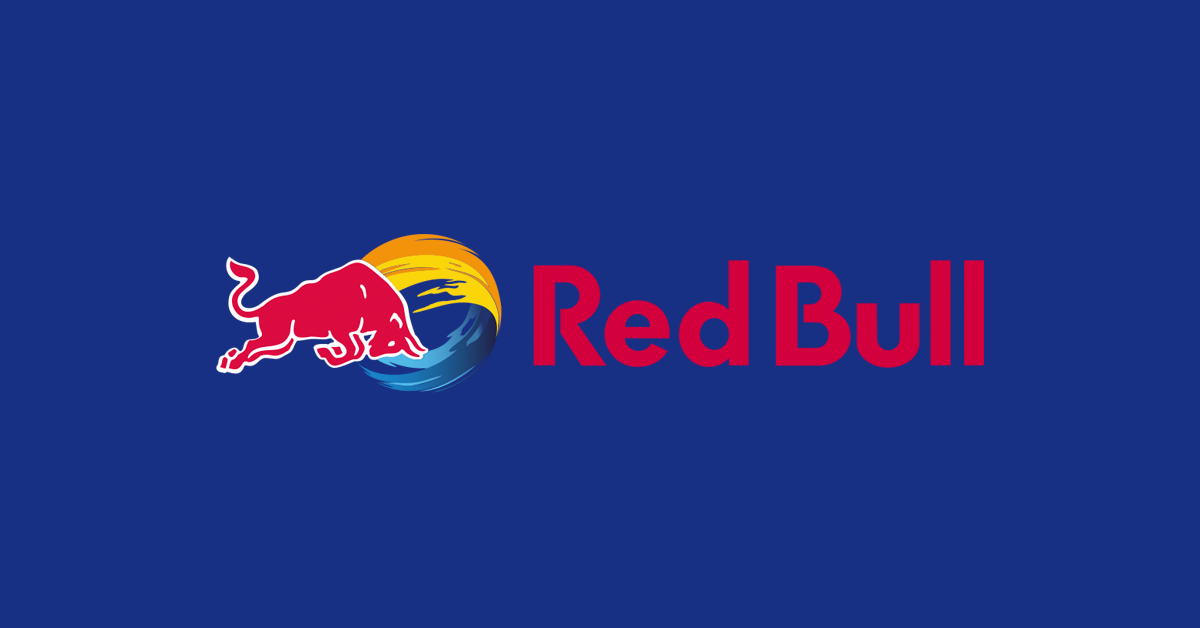
Red Bull, a name synonymous with energy drinks and high-octane marketing, has carved a unique niche in the world of advertising, brand activation, and digital marketing. This article delves into the fascinating journey of Red Bull, exploring how it transformed from a simple energy drink into a global marketing powerhouse. – the Red Bull digital marketing ultimate strategies.
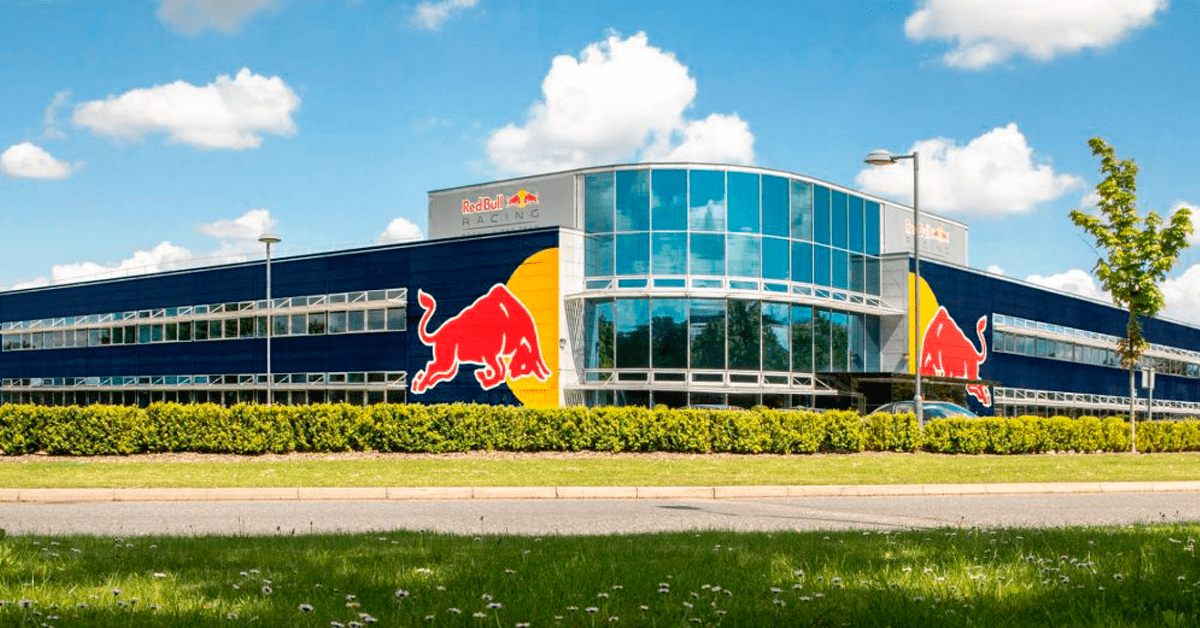
Early Beginnings: The Birth of the Red Bull Brand
The early beginnings of Red Bull represent a remarkable story of innovation, cultural adaptation, and entrepreneurial foresight. This journey began in the 1980s, a pivotal era for the global beverage industry, marked by the emergence of new product categories and changing consumer preferences. At the heart of Red Bull’s inception was Austrian entrepreneur Dietrich Mateschitz, whose encounter with a Thai energy drink, Krating Daeng, during a business trip would lead to the creation of one of the world’s most iconic brands.
Mateschitz, a marketing professional, was intrigued by Krating Daeng’s unique composition and its popularity among Thai workers and drivers seeking an energy boost. The drink, created by Chaleo Yoovidhya, a Thai businessman, was significantly different from Western beverages in both taste and function. Mateschitz saw potential in this difference, recognizing an opportunity to introduce a new kind of product to Western markets.
The formulation of Red Bull was a careful process. Mateschitz and Yoovidhya collaborated to modify Krating Daeng’s recipe, tailoring it to suit Western palates. This involved altering the flavour and carbonating the drink, which was originally non-carbonated. The result was a sweet, taurine-infused energy drink, distinct from anything available in Europe or America at that time. In 1987, the first can of Red Bull was sold in Austria, marking the beginning of a new era in the beverage industry.
The branding of Red Bull was as innovative as its formula. Mateschitz chose a striking logo – two red bulls charging against each other in front of a yellow sun, symbolising energy and power. This imagery, coupled with the slim silver can, created a visual appeal that set Red Bull apart from traditional soft drinks and sports beverages.
The marketing strategy employed by Red Bull in its early days was revolutionary. At a time when large-scale advertising and celebrity endorsements were the norms, Red Bull took a different path. Mateschitz believed in a ‘below-the-line’ strategy, focusing on targeted marketing efforts. This included grassroots marketing tactics like handing out free samples to college students, sponsoring local sporting events, and creating word-of-mouth buzz. The idea was to build a connection with the youth and sports enthusiasts, who were seen as the ideal demographic for an energy drink.
Another cornerstone of Red Bull’s early marketing strategy was the creation of a unique brand narrative. The slogan “Red Bull gives you wings” was not just a catchy phrase; it encapsulated the essence of the product – a source of energy and vitality. This slogan became the foundation for a series of imaginative and whimsical advertising campaigns that told stories of transformation and enhanced abilities enabled by the drink.
Mateschitz’s approach to building the brand was also marked by patience and long-term vision. Instead of rushing to expand, Red Bull focused on strengthening its presence in Austria, perfecting its marketing techniques, and understanding its target audience. This meticulous approach paid off when the brand began its international expansion in the 1990s.
Red Bull’s entry into international markets was strategic and well-planned. Each new market was approached with a tailored marketing strategy, taking into account local cultures and preferences. In the United States, for instance, Red Bull targeted extreme sports events and college campuses, tapping into a culture that celebrated energy, adventure, and youthfulness.
The early days of Red Bull set the stage for its global success. Through a combination of innovative product development, strategic branding, and unconventional marketing tactics, Red Bull not only created a new beverage category but also established a brand that resonated with consumers worldwide. This initial period laid the groundwork for the brand’s future endeavours in sports, culture, and digital marketing, enabling Red Bull to become more than just an energy drink company, but a symbol of energy, youth, and adventure.
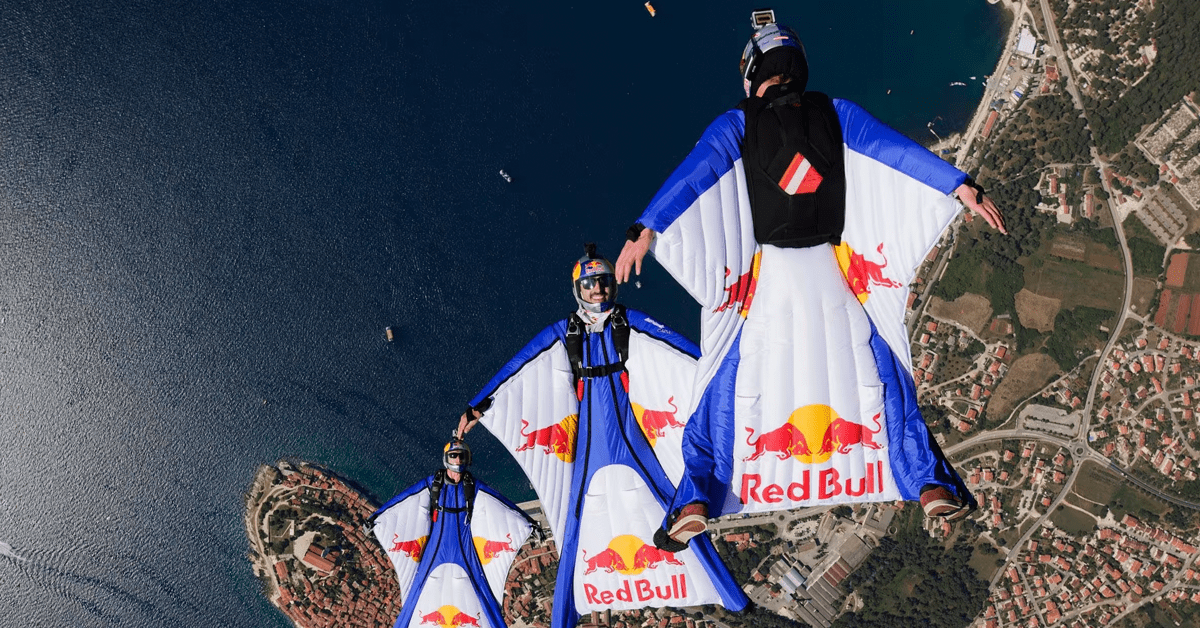
Innovative Advertising: Wings to the Slogan
Innovative advertising has been a cornerstone in the meteoric rise of Red Bull, turning it into a household name synonymous with energy, adventure, and high-octane lifestyles. The phrase “Red Bull gives you wings” is not just a slogan; it’s a masterstroke of marketing genius that encapsulates the brand’s essence and its strategic approach to advertising. This tagline, more than words, became a narrative vehicle that propelled the brand into the hearts and minds of its target audience.
The origin of this slogan is as interesting as its impact. It was conceived to communicate the product’s benefit – a boost of energy, akin to giving someone wings. However, the genius lay in how Red Bull used it, not just as a statement, but as a storytelling tool. This approach was a significant departure from the typical advertising practices of the time, which often relied on direct product benefits or celebrity endorsements.
Red Bull’s advertising campaigns, especially the early ones, were characterised by their whimsical and imaginative nature. The ads often featured animated sequences where ordinary individuals found themselves in mundane, low-energy situations – be it a sleepy office worker or a tired student. Upon consuming Red Bull, these characters would sprout wings, a literal depiction of the slogan, and embark on extraordinary feats, showcasing a newfound vitality and zest for life. This clever use of animation and narrative didn’t just sell a product; it sold an experience, an aspiration.
The brand’s advertising strategy was groundbreaking in its consistent avoidance of conventional approaches. While other brands invested heavily in primetime TV spots and celebrity endorsements, Red Bull focused on creating content that was unique, memorable, and shareable. Their commercials were designed not just to inform, but to entertain, often leaving viewers with a smile and a story rather than just a product message. This approach helped the brand create a distinct voice in a cluttered advertising landscape, making Red Bull ads instantly recognizable.
Another innovative aspect of Red Bull’s advertising was its integration with the brand’s broader marketing initiatives. The slogan “Red Bull gives you wings” was seamlessly woven into its sports, culture, and event sponsorships. Whether it was extreme sports, music festivals, or the famous Red Bull Flugtag events where participants built homemade, human-powered flying machines, the underlying message was consistent – Red Bull is synonymous with extraordinary energy and creativity.
The adaptability of the slogan across different media platforms showcased Red Bull’s understanding of evolving media landscapes. As digital media and social networking platforms emerged, Red Bull was among the first brands to leverage these new channels effectively. Their content was tailor-made for the digital age – short, engaging, and perfect for sharing. This strategy not only amplified their reach but also reinforced the brand’s image as innovative and youth-oriented.
Moreover, Red Bull’s advertising strategy has always been about creating a connection with its audience. Their ads often featured scenarios and characters that their target demographic could relate to, making the brand feel more personal and approachable. This relatability was crucial in building a loyal customer base and turning consumers into brand advocates.
Red Bull’s advertising strategy, led by its iconic slogan, has been a blend of creativity, innovation, and strategic foresight. By creating a unique brand voice through memorable and engaging narratives, Red Bull has achieved more than just commercial success; it has embedded itself into popular culture. The slogan “Red Bull gives you wings” transcends being a mere tagline; it’s a symbol of the brand’s identity, embodying its spirit of adventure, energy, and the extraordinary. This approach to advertising has not only set Red Bull apart in the beverage industry but has also established it as a benchmark in innovative brand communication.
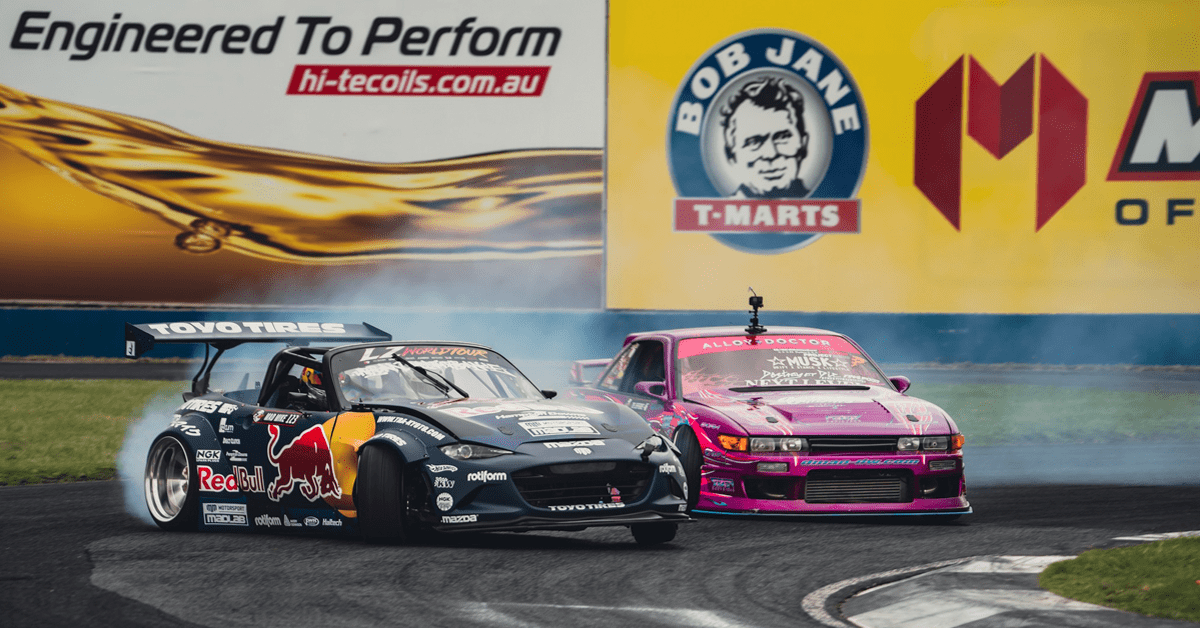
Brand Activation: Beyond Traditional Marketing
Red Bull’s approach to brand activation stands as a paradigm of innovative marketing, transcending traditional advertising methods. The company’s strategies are characterised by their dynamism, creativity, and a deep understanding of their target audience. Rather than relying solely on standard advertising techniques such as TV commercials or print ads, Red Bull has ventured into a realm of marketing that emphasises active engagement, experience, and cultural integration. This approach not only reinforces brand recognition but also fosters a strong, emotional connection with the audience.
Red Bull's Strategy: Experiential Marketing and Audience Engagement
Central to Red Bull’s brand activation strategy is experiential marketing. This involves creating immersive experiences that engage consumers directly, allowing them to interact with the brand in a meaningful way. Red Bull’s events are not just marketing tools; they are cultural phenomena that resonate with the lifestyles and interests of their audience. From extreme sports events to music festivals, each activity is designed to reflect the brand’s energetic and adventurous image. This approach is particularly effective in today’s digital age, where traditional advertising often fails to make an impact on the desensitised consumer.
Pioneering in Extreme Sports and Adventure
One of the most prominent aspects of Red Bull’s brand activation is its deep association with extreme sports and adventure. By sponsoring athletes and events in disciplines like BMX, motocross, Formula 1, and cliff diving, Red Bull aligns itself with the thrill and excitement these sports represent. This strategy is not just about slapping a logo on an event; Red Bull deeply immerses itself in these communities, often playing a role in shaping the sports themselves. For instance, the Red Bull Air Race and Red Bull Rampage are events created and owned by the brand, offering unique and thrilling experiences that are intrinsically linked to the Red Bull name.
Cultivating a Red Bull Culture Through Events and Festivals
Red Bull’s brand activation extends into cultural spheres as well. The company has been successful in embedding its brand into various cultural scenes, most notably through music and dance. Events like the Red Bull Music Academy and Red Bull BC One breakdancing competition showcase the brand’s commitment to fostering talent and creating platforms for artistic expression. These events not only appeal to the youth but also position Red Bull as a brand that supports creativity and innovation.
Leveraging Digital Platforms for Greater Reach
In addition to physical events, Red Bull effectively leverages digital platforms to amplify its brand activation efforts. The company has mastered the art of content marketing, creating compelling content that is widely shared across social media and digital channels. From high-quality videos of extreme sports to behind-the-scenes documentaries of their events, Red Bull’s content is designed to captivate and engage. This content not only reaches a wider audience but also reinforces the brand’s image as a leader in exciting, high-quality entertainment.
Building Community and Customer Loyalty
A key outcome of Red Bull’s brand activation strategy is the cultivation of a loyal community. By consistently delivering experiences and content that resonate with their audience, Red Bull has built a fan base that is deeply engaged with the brand. This community not only consumes the product but also embodies the lifestyle and values that Red Bull represents. This level of brand loyalty is a powerful asset, turning customers into brand ambassadors who organically spread the word about Red Bull.
Redefining the Scope of Marketing
Red Bull’s approach to brand activation is a masterclass in modern marketing. By moving beyond traditional advertising and focusing on experiential marketing, community building, and digital content, Red Bull has established a brand presence that is both powerful and pervasive. This strategy has not only differentiated Red Bull in a crowded market but has also set new standards for how brands can engage with their audience in a meaningful and impactful way. Red Bull’s success in brand activation is a testament to the power of innovation, creativity, and an unwavering commitment to understanding and integrating with the brand’s target audience.
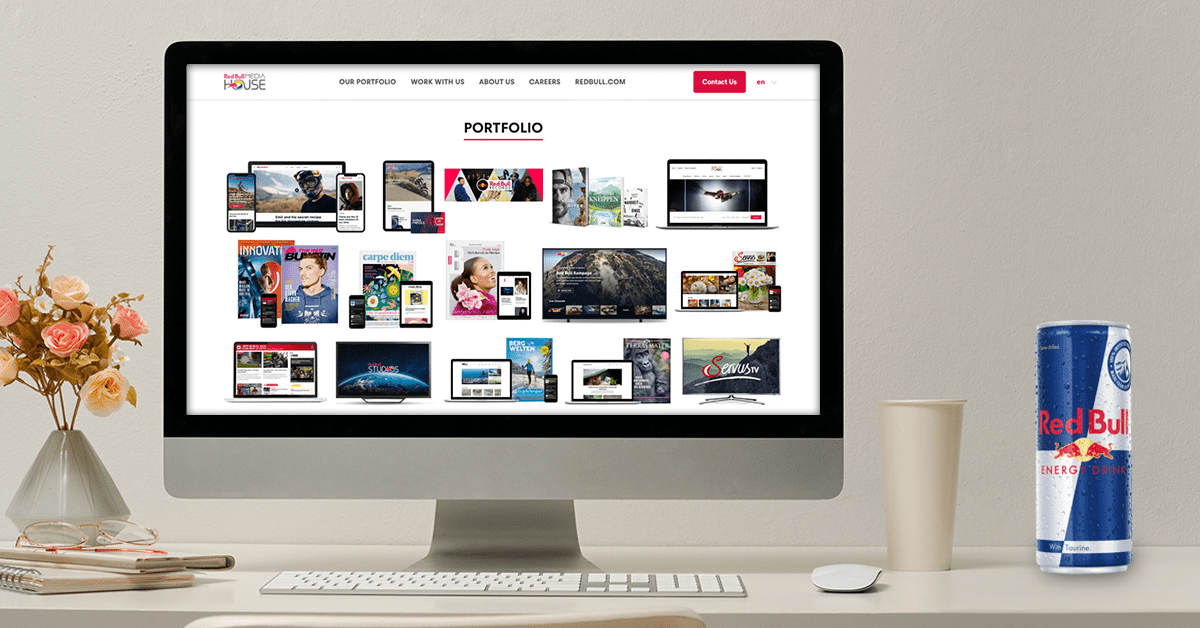
Red Bull Digital Marketing: Pioneering Social Media and Content Creation
Red Bull’s approach to digital marketing is a quintessential example of how a brand can effectively leverage social media and content creation to build a powerful online presence. This strategy not only enhances brand recognition but also establishes a deeper, more interactive relationship with the target audience. By pioneering in the realms of social media engagement and innovative content production, Red Bull has set a benchmark for digital marketing excellence.
Revolutionising Brand Presence on Social Media
At the forefront of Red Bull’s digital marketing strategy is its adept use of social media platforms. The brand has harnessed the power of platforms such as Facebook, Instagram, Twitter, and YouTube to create a dynamic and engaging online presence. What sets Red Bull apart is not just its active participation on these platforms but the way it tailors content to suit the unique features and audience of each platform. This content is not mere promotional material; it is designed to entertain, engage, and inspire the audience, encouraging interaction and sharing.
Red Bull’s social media content is diverse, ranging from breathtaking photographs and videos of extreme sports to behind-the-scenes glimpses of events and athlete endorsements. This variety ensures that the content remains fresh, appealing, and relevant to the interests of its followers. Additionally, Red Bull’s social media strategy involves interacting with its audience through comments, shares, and even user-generated content, fostering a sense of community and belonging among its followers.
Mastering the Art of Content Creation
Content creation is another pillar of Red Bull’s digital marketing strategy. The brand has transcended traditional marketing norms by becoming a content creation powerhouse. Red Bull Media House, the company’s media production arm, is dedicated to creating high-quality, compelling content that resonates with the brand’s adventurous and energetic ethos. This includes not only short-form content for social media but also documentaries, music, and event broadcasts.
The content produced by Red Bull is characterised by its high production value and its ability to tell captivating stories. Whether it’s a mini-documentary about an extreme sports athlete or a visually stunning video of a music festival, each piece of content is crafted to engage and inspire. This approach positions Red Bull not just as a brand but as a credible publisher of exciting and engaging media, broadening its appeal beyond its consumer base.
Pioneering in User-Generated Content and Interactive Campaigns
User-generated content (UGC) and interactive campaigns have been integral to Red Bull’s digital marketing strategy. The brand often encourages its followers to share their own experiences and adventures under Red Bull-themed hashtags or contests. This strategy not only generates a wealth of authentic content but also deepens the audience’s engagement with the brand, as they become active participants in the Red Bull story.
Interactive campaigns, such as augmented reality experiences and online competitions, further engage the audience. By leveraging the latest in digital technology, Red Bull creates immersive experiences that go beyond passive consumption, inviting users to interact with the brand in new and exciting ways.
Leveraging Video Marketing and Live Streaming
Video marketing, particularly on platforms like YouTube, has been a game-changer for Red Bull. The brand’s YouTube channel is a trove of engaging content, featuring everything from extreme sports clips to live-streamed events. Red Bull has mastered the art of using video to tell stories, showcase experiences, and highlight the brand’s association with adventure and excitement.
Live streaming of events has also played a crucial role in Red Bull’s digital marketing. Events like the Red Bull Stratos jump and various sports competitions are broadcast live, attracting millions of viewers worldwide. This strategy not only increases the reach of these events but also creates a sense of real-time engagement and excitement around the brand.
Setting a New Standard in Digital Marketing
In conclusion, Red Bull’s approach to digital marketing through pioneering social media engagement and innovative content creation has set a new standard in the industry. By effectively leveraging different digital platforms and focusing on high-quality, engaging content, Red Bull has built a formidable online presence that resonates with its target audience.
This digital strategy, characterised by its creativity, interactivity, and emphasis on storytelling, has not only bolstered Red Bull’s brand identity but has also established it as a leader in the digital marketing space. Red Bull’s success in this arena demonstrates the power of digital media in building a brand that is dynamic, engaging, and deeply connected with its audience.
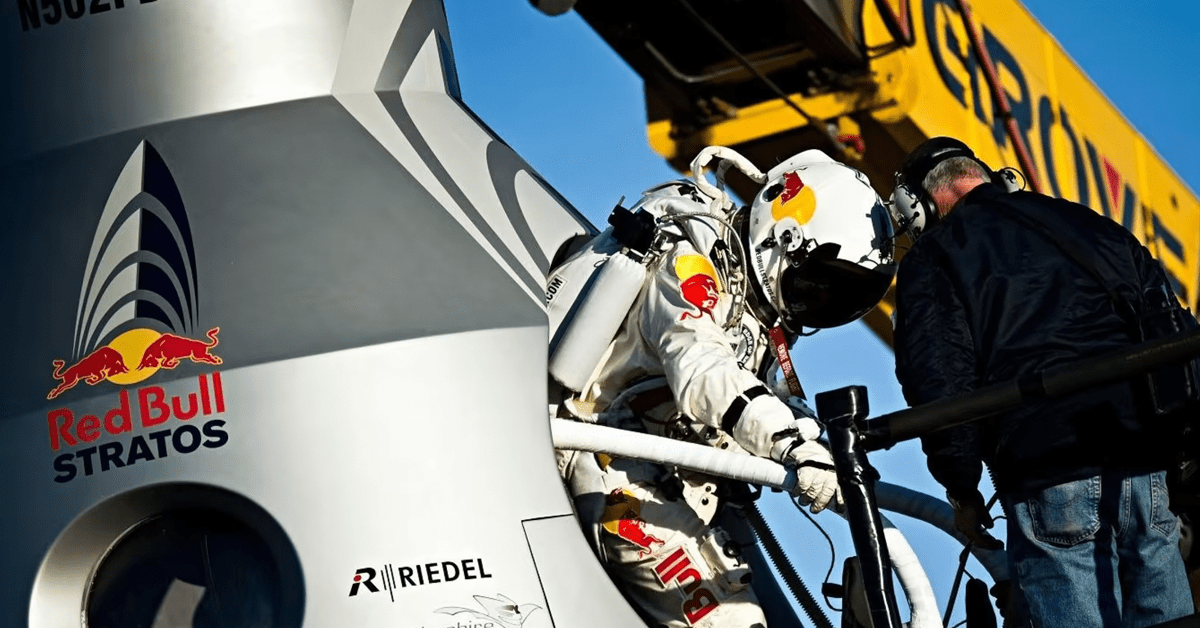
Iconic Campaigns: Stratos and Beyond
Red Bull’s iconic campaigns, particularly the Stratos project, stand as a testament to the brand’s innovative and boundary-pushing approach to marketing. These campaigns go beyond traditional advertising, embedding the brand in the collective consciousness through audacious stunts and pioneering initiatives.
Red Bull Stratos: A Leap into History
The Red Bull Stratos project, executed in 2012, is perhaps the most audacious and groundbreaking marketing campaign in history. It featured Austrian skydiver Felix Baumgartner jumping from a helium balloon in the stratosphere, breaking the sound barrier during his free fall before parachuting to Earth. This event wasn’t just a record-breaking stunt; it was a masterfully orchestrated marketing campaign that captured the world’s imagination.
The project aligned perfectly with Red Bull’s brand ethos – pushing limits, defying boundaries, and elevating human potential. It took seven years of meticulous planning, involving a team of scientists, engineers, and aeronautics experts. Red Bull not only sponsored the event but also created a comprehensive marketing campaign around it. This included multi-platform content, from behind-the-scenes documentaries to live streaming the event, which was watched by millions worldwide.
Stratos exemplified content marketing at its best. Red Bull provided a real, gripping narrative that people could follow. The campaign generated massive media coverage, giving Red Bull unprecedented global exposure. The live stream of the jump set a record for the most concurrent views on YouTube at that time, showcasing the power of digital media and real-time broadcasting in brand marketing.
Beyond Stratos: Continuing the Legacy
Red Bull’s innovative campaigns did not stop with Stratos. The brand continued to create and sponsor events that align with its image of high-energy, adventurous activities. Each campaign and event under Red Bull’s banner carries the brand’s signature style of pushing the envelope and challenging the status quo.
Red Bull Air Race: An international series of air races where pilots navigate a challenging obstacle course in the fastest time. This event combines speed, precision, and skill, making it a thrilling spectacle and perfectly embodying the Red Bull spirit.
Red Bull Rampage: An extreme mountain biking competition held in Utah’s rugged terrain. It showcases some of the best athletes in the sport, performing breathtaking stunts and jumps, and is a key event in the mountain biking calendar.
Art of Motion: A parkour competition that brings together the world’s best freerunners in iconic locations. The event highlights athleticism, creativity, and the urban landscape, resonating well with a younger, energy-driven audience.
Red Bull Music Academy: A global music institution committed to fostering creativity in music. This includes workshops, festivals, and collaborations with artists, underlining Red Bull’s commitment to cultural innovation and creative arts.
Esports Sponsorships: Red Bull has made significant inroads into the world of competitive gaming, sponsoring tournaments and teams. This move capitalises on the burgeoning esports industry, connecting the brand with a tech-savvy, youthful audience.
Impact and Analysis
The impact of these campaigns extends beyond mere brand visibility. Red Bull’s events create immersive experiences that resonate deeply with their audience. They are not just watching an ad; they are engaging with a narrative that is exciting, inspiring, and in line with their interests and aspirations. This strategy has helped Red Bull build a loyal community and maintain its status as a leader in innovative marketing.
Moreover, these campaigns reflect a shift in advertising strategies in the digital age. Red Bull’s focus on content creation, community engagement, and experiential marketing has set a new standard in the industry. The brand’s ability to create events that double as compelling content has blurred the lines between advertising and entertainment, making the brand itself a source of media.
Red Bull’s iconic campaigns, particularly Stratos and its subsequent endeavours, showcase the brand’s unique approach to marketing. By creating extraordinary experiences and engaging narratives, Red Bull has not only promoted its product but has also elevated its brand to symbolise a lifestyle of adventure, excitement, and pushing boundaries. This approach has not only redefined advertising effectiveness but has also cemented Red Bull’s position as a cultural icon in the world of sports, music, and beyond.
Community Engagement: Fostering a Red Bull Culture
Community engagement is a cornerstone of Red Bull’s marketing and brand strategy, demonstrating the company’s commitment to fostering a unique culture that transcends its product. Through various initiatives, Red Bull has successfully cultivated a community that embodies the brand’s values of adventure, performance, and creativity. This approach to community engagement has not only strengthened the brand’s identity but also created a loyal and active fan base, integral to its continued success.
Creating a Red Bull Culture Through Events and Sponsorships
Red Bull has expertly utilised events and sponsorships to build a community around its brand. By hosting and sponsoring a diverse range of activities – from extreme sports competitions to music festivals and cultural events – Red Bull has positioned itself at the centre of these communities. Events like Red Bull Rampage, Red Bull Air Race, and the Red Bull Music Academy are not just marketing opportunities; they are platforms where the brand’s ethos of energy, excitement, and pushing boundaries come to life. These events attract enthusiasts from around the world, creating a shared experience that bonds participants and spectators to the Red Bull brand.
Leveraging Athlete and Artist Partnerships
The brand’s engagement with athletes and artists further reinforces this community-building strategy. Red Bull sponsors numerous athletes across various disciplines, particularly in extreme and action sports. These individuals are not just brand ambassadors; they embody the adventurous spirit and high performance that Red Bull represents. Similarly, Red Bull’s support for artists, musicians, and creators through initiatives like the Red Bull Music Academy demonstrates a commitment to fostering creativity and talent. These partnerships create a network of influential figures who resonate with and amplify the brand’s values, further embedding Red Bull within these communities.
Red Bull Media House: Beyond Traditional Advertising
Red Bull Media House plays a pivotal role in community engagement. As a multi-platform media company, it produces and distributes a wide array of engaging content, from films and documentaries to music and online content. This content often features stories from the Red Bull community, showcasing real experiences and achievements of those within the brand’s sphere. By focusing on storytelling and high-quality production, Red Bull Media House has become more than a marketing tool; it’s a respected content creator, attracting audiences beyond Red Bull consumers and deepening the brand’s cultural impact.
Digital Engagement and Social Media
Red Bull’s digital engagement strategy also contributes significantly to its community-building efforts. The brand’s strong presence on social media platforms allows for direct interaction with its audience. Through these channels, Red Bull shares content that resonates with its followers, encourages user-generated content, and fosters a sense of belonging among its community members. This two-way communication enables Red Bull to maintain a pulse on its audience’s interests and preferences, ensuring that its initiatives remain relevant and engaging.
Grassroots Marketing and Localised Initiatives
At the local level, Red Bull excels in grassroots marketing, often supporting smaller events and initiatives that resonate with local communities. This approach not only increases brand visibility but also shows a genuine investment in the interests and passions of these communities. By nurturing these local connections, Red Bull builds a network of loyal supporters and grassroots ambassadors who advocate for the brand in their everyday lives.
Cultivating a Loyal and Engaged Community
Red Bull’s community engagement strategy is a masterclass in how to foster a culture around a brand. Through a combination of event sponsorships, partnerships with athletes and artists, innovative content creation, and digital engagement, Red Bull has built a community that is deeply connected to its brand ethos. This community is not just a consumer base; it’s a global network of individuals who share a passion for adventure, creativity, and high performance. Red Bull’s success in cultivating this culture demonstrates the power of a brand that goes beyond selling a product to creating an immersive and engaging lifestyle experience.
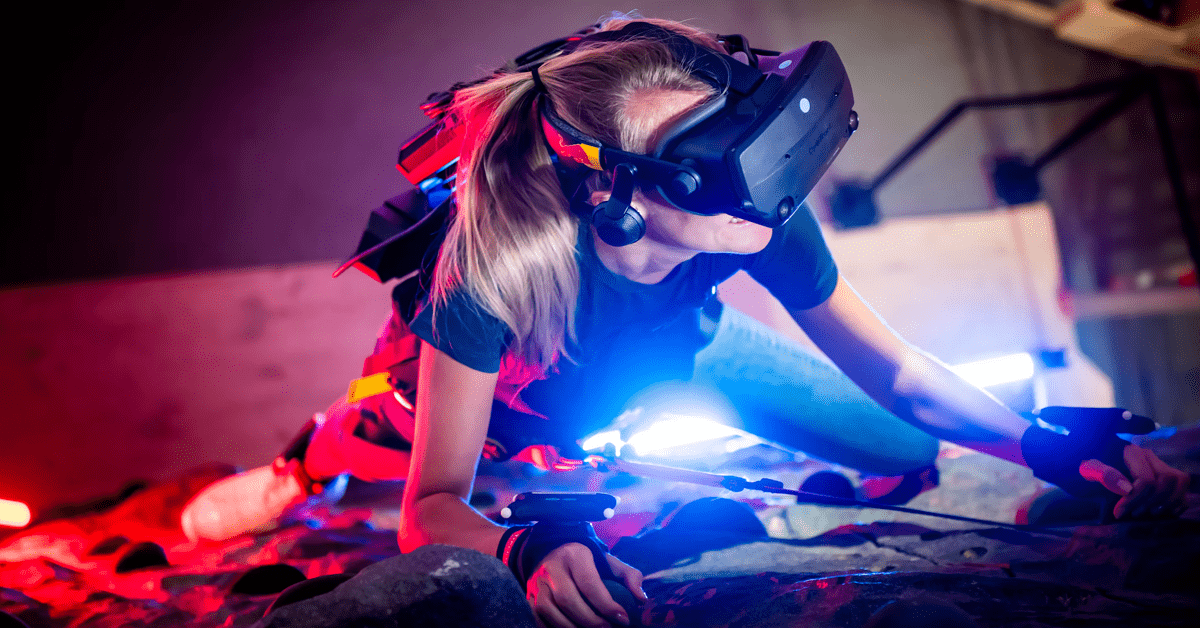
The Future: Innovating in a Digital World
The future of Red Bull in the digital world is poised to be as dynamic and innovative as its past. With the rapid evolution of technology and changing consumer behaviours, Red Bull’s strategy is expected to continuously adapt and pioneer new digital frontiers. The brand’s approach to innovation in a digital world is multifaceted, focusing on augmented reality, interactive campaigns, esports, and leveraging emerging digital platforms.
Embracing Augmented Reality and Interactive Experiences
Augmented Reality (AR) offers exciting new possibilities for brand engagement, and Red Bull is at the forefront of exploring these opportunities. By integrating AR into their marketing strategies, Red Bull can create immersive experiences that transcend traditional advertising. Imagine AR applications that allow consumers to experience extreme sports or music events in their living room, or interactive product packaging that tells a story or offers unique content. These innovations can deepen the connection between the brand and its audience, offering an interactive experience that goes beyond passive consumption.
Pioneering in Esports and Gaming
The world of esports and gaming presents a burgeoning market, and Red Bull has already made significant strides in this domain. Recognizing the growing popularity of gaming, Red Bull could further invest in sponsoring esports teams, tournaments, and creating gaming-related content. This engagement not only allows Red Bull to tap into a vast and engaged audience but also aligns with its brand ethos of competition, skill, and high performance. Future initiatives could include developing branded games or interactive experiences that seamlessly integrate Red Bull’s identity with gaming culture.
Leveraging Emerging Digital Platforms
Staying ahead in the digital realm also means identifying and leveraging emerging platforms. Red Bull has consistently adapted to new digital trends, from social media to content streaming. In the future, this might involve exploring platforms like TikTok or newer social media channels, adapting their content strategy to fit the unique formats and audiences of these platforms. This adaptability is key to remaining relevant and engaging to a younger, tech-savvy audience.
Content Strategy for the Digital Age
Content creation has been a cornerstone of Red Bull’s digital strategy, and this will continue to be a focus in the future. However, the nature of this content is likely to evolve. As consumers seek more authentic and relatable content, Red Bull could shift towards storytelling that highlights real experiences, challenges, and achievements of individuals within the Red Bull community. This approach can create a more personal connection with the audience, making the brand more relatable and inspiring.
Data-Driven Marketing and Personalization
In the digital age, data is king. Red Bull’s future marketing strategies will likely be increasingly data-driven, using consumer insights to tailor content, campaigns, and experiences. Personalization, based on user preferences and behaviours, can significantly enhance engagement. By analysing data from various digital touchpoints, Red Bull can create more targeted and relevant marketing initiatives, enhancing the effectiveness of their digital campaigns.
Sustainable Digital Initiatives
As global awareness of environmental issues grows, Red Bull’s digital initiatives may also include a focus on sustainability. This could involve using digital platforms to promote environmental awareness, support sustainable practices, or highlight Red Bull’s efforts in environmental conservation. Such initiatives can resonate with a consumer base that is increasingly conscious of corporate responsibility towards the planet.
Innovating in a Constantly Evolving Digital Landscape
Red Bull’s future in the digital world is likely to be marked by continuous innovation, adaptability, and a forward-thinking approach. By embracing new technologies like AR, investing in esports, leveraging emerging digital platforms, evolving its content strategy, employing data-driven marketing, and focusing on sustainability, Red Bull can maintain its position as a leader in digital marketing. These strategies will not only ensure ongoing engagement with its current audience but also attract new consumers, keeping the brand at the forefront of digital innovation and cultural relevance.
Conclusion: A Brand That Gives Marketing Wings
Red Bull’s journey in the world of marketing has been nothing short of revolutionary, offering invaluable lessons for brands aiming to elevate their presence in a crowded marketplace. The company has transformed the concept of what a brand can be, transcending traditional boundaries to become a symbol of energy, adventure, and innovation. This transformation has not just been about selling a product; it’s been about creating a culture and a lifestyle that resonates deeply with its audience. As we explore the concluding thoughts on Red Bull’s marketing triumphs, it’s also worth considering how contemporary digital marketing strategies, like those offered by agencies such as WDD Malaysia with their Website Digital Dialogue (WDD) Plan, can learn from and emulate Red Bull’s success.
Red Bull's Marketing Legacy: Innovation and Engagement
Red Bull’s marketing strategy has been characterised by its willingness to innovate and engage with its audience in novel ways. Through their high-energy events, athlete sponsorships, unique content creation, and effective use of digital platforms, Red Bull has set a new standard in brand communication. This approach has not only increased sales but has also cultivated a loyal fan base. Red Bull’s ability to connect with its audience on an emotional level, turning consumers into brand advocates, is a key takeaway for any marketing strategy, including the WDD Plan.
The Importance of Creating a Brand Narrative
A crucial aspect of Red Bull’s marketing success is its compelling brand narrative. “Red Bull gives you wings” is more than a slogan; it’s a storytelling tool that encapsulates the brand’s essence. This narrative approach is something that digital marketing strategies can emulate. For instance, the WDD Plan, which combines bespoke website design with a digital communication strategy, can incorporate narrative elements that resonate with a brand’s identity and values, thereby creating a more engaging and relatable online presence.
Leveraging Digital Platforms Effectively
In today’s digital age, the effective use of online platforms is vital. Red Bull’s mastery in this area, particularly in content creation and social media engagement, highlights the importance of a digital-first approach. Agencies like WDD Malaysia can take a leaf out of Red Bull’s book by focusing on creating high-quality, shareable content that aligns with a brand’s identity and engages the target audience. This could be through captivating visuals, interactive websites, or compelling storytelling that stands out in the digital space.
Personalization and Data-Driven Strategies
Red Bull’s approach to marketing is highly personalised, always aiming to resonate with its target demographic. Similarly, digital marketing strategies like the WDD Plan can leverage data analytics to tailor content and strategies to specific audiences. By understanding consumer behaviours and preferences, brands can create more effective and targeted marketing campaigns, enhancing user engagement and conversion rates.
Embracing Innovation and Future Trends
Red Bull’s willingness to embrace new trends and technologies is a crucial part of its marketing success. Similarly, digital marketing strategies must be flexible and adaptable, ready to leverage emerging technologies and trends. This could involve exploring new digital platforms, integrating augmented reality experiences, or capitalising on the growing importance of mobile-first design.
Red Bull's Blueprint for Digital Marketing Success
Red Bull’s marketing approach provides a blueprint for how brands can achieve distinction and loyalty in a competitive market. Its focus on creating a strong brand narrative, innovative engagement strategies, effective use of digital platforms, data-driven personalization, and willingness to embrace new technologies sets it apart. For digital marketing strategies like WDD Malaysia’s 4 Quadrants of Digital Strategies, incorporating these elements can be instrumental in crafting a successful digital presence. By drawing inspiration from Red Bull’s marketing playbook, brands can not only increase their visibility but also create a lasting impact in the minds of their consumers, giving their marketing efforts, quite literally, wings.




